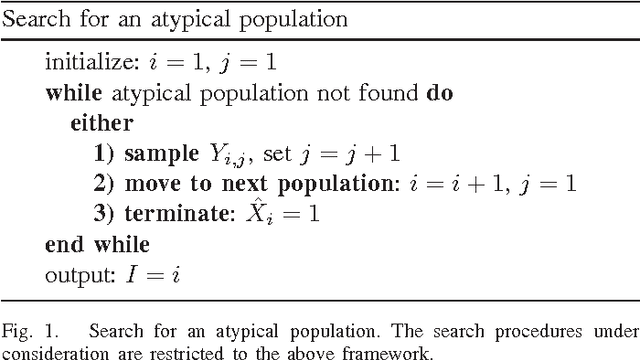The Sample Complexity of Search over Multiple Populations
Paper and Code
May 01, 2013


This paper studies the sample complexity of searching over multiple populations. We consider a large number of populations, each corresponding to either distribution P0 or P1. The goal of the search problem studied here is to find one population corresponding to distribution P1 with as few samples as possible. The main contribution is to quantify the number of samples needed to correctly find one such population. We consider two general approaches: non-adaptive sampling methods, which sample each population a predetermined number of times until a population following P1 is found, and adaptive sampling methods, which employ sequential sampling schemes for each population. We first derive a lower bound on the number of samples required by any sampling scheme. We then consider an adaptive procedure consisting of a series of sequential probability ratio tests, and show it comes within a constant factor of the lower bound. We give explicit expressions for this constant when samples of the populations follow Gaussian and Bernoulli distributions. An alternative adaptive scheme is discussed which does not require full knowledge of P1, and comes within a constant factor of the optimal scheme. For comparison, a lower bound on the sampling requirements of any non-adaptive scheme is presented.
 Add to Chrome
Add to Chrome Add to Firefox
Add to Firefox Add to Edge
Add to Edge